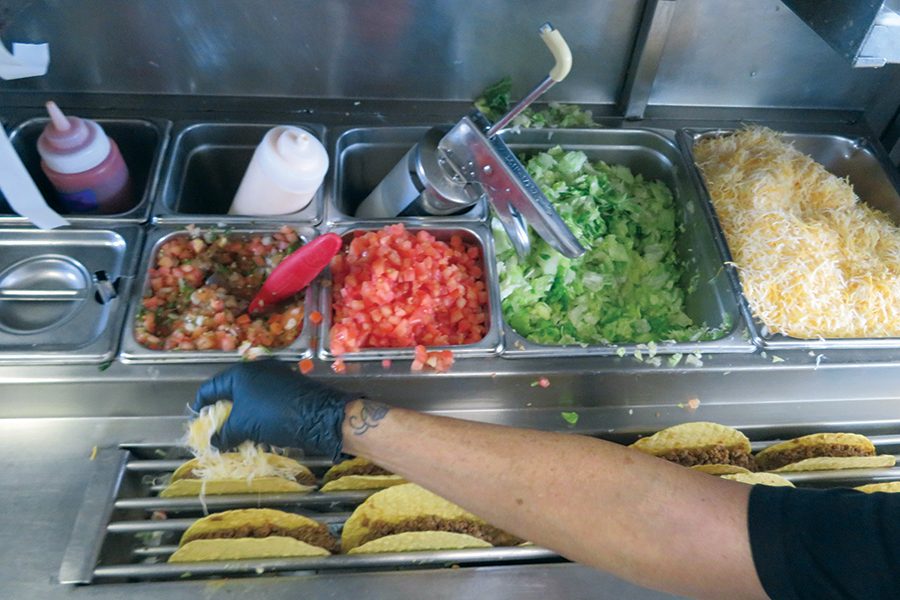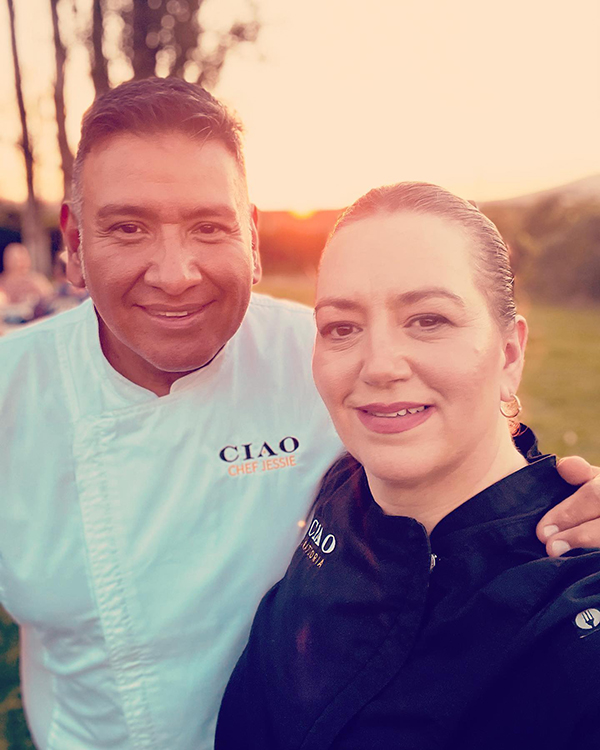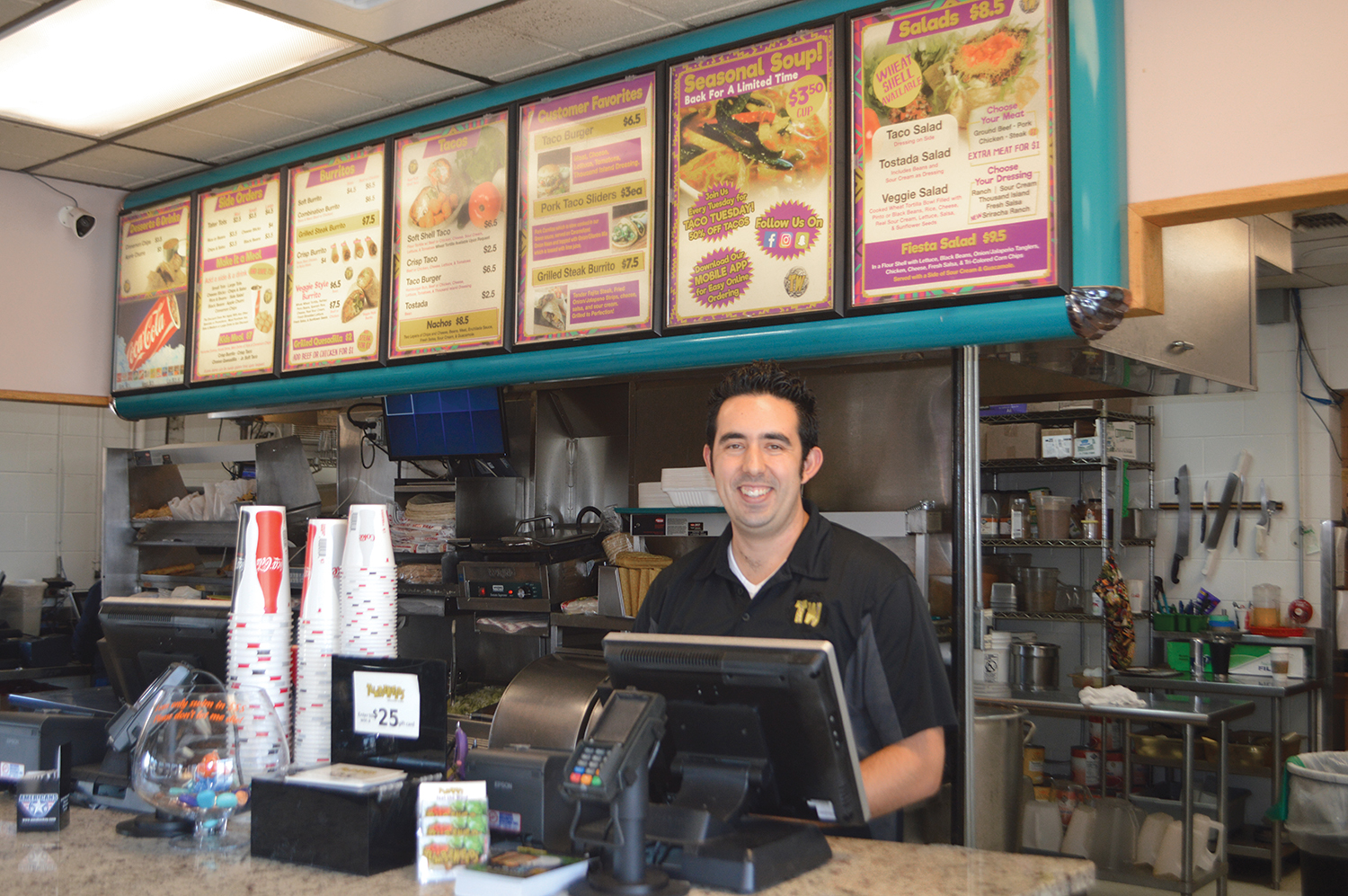
Home » Restaurant owners feel pinch of food inflation
Restaurant owners feel pinch of food inflation

September 12, 2022
Price inflation has spiraled upward in the wake of the Covid-19 pandemic.
Fallout from lockdowns compounded over the intervening months with the effects of other unexpected events on the world stage is leading to shortages and subsequent price hikes.
Though inflation is felt by everyone across all sectors, perhaps nowhere does it hit harder than at the register for what directly sustains a person: food.
The Consumer Price Index (CPI) for all food was 10.9% higher in July 2022 compared to July 2021, according to the U.S. Department of Agriculture’s Food Price Outlook for 2022-23.
The report provides figures for “food-at-home”– purchased from a grocery store or supermarket – and “food-away-from-home” bought from restaurants.
Food-at-home is up 13.1% over July 2021, while food-away-from-home is up 7.6% over the same period.
The annual inflation rate for the U.S. from July 2021 to July 2022 was 8.5% overall.
For 2023, prices are expected to climb an additional 2% to 3% for food-at-home and 3% to 4% for food-away-from-home.

As Susanne Ayala, owner of Ciao Wagon food truck, Ciao Trattoria and Ciao Catering in Pasco, said that although consumers might be paying 7.6% more for food-away-from-home, the figures are more inflated in restaurant owners’ account books.
“(Our prices are) still way below what (they) should be because what’s out in the media is not keeping up with the true rate of inflation,” she said.
“The things that drive our industry – proteins, dairy, fuel – all those things are individually seeing higher increases … and consumers are expecting (an 8.5%) increase,” she said.
Restaurant food is not only a synthesis of ingredients, but also a global supply chain powered by fossil fuels which transports from all around the world food, takeout containers, paper products, disposable cutlery, cleaning supplies, uniforms, back-office supplies and other items supporting restaurant operations.
When links in that chain are disrupted – examples include this year’s outbreak of avian flu among commercial poultry flocks and the war in Ukraine impacting grain exports – it results in the increased price of those goods and others linked to them.
“There have always been fluctuations and volatility … it didn’t hit me in the side of the face, but when I made my orders, it was gradually getting to be more and more despite not changing the quantity,” said Keith Moon, owner of Tumbleweeds in Richland.
A few examples he mentioned: fresh chicken now typically runs $200 for a 40-pound case, when previously it was $95 to $110.
Shortening for fryers ran about $20 for 35 pounds two years ago, now it’s $55. The price of cheese has gone from $50 to $70 for Moon.

Another factor affecting the cost of restaurant food is increased overhead expenses such as rent hikes based on real estate appreciation trends, market demand and increased construction costs, as well as business licensing, insurance and gas for food trucks or delivery vehicles.
Meanwhile, employees are seeing their buying power diminish in the face of inflation, leading to larger annual cost of living bumps and motivation to seek higher paid work.
Raising wages to retain employees adds to the cost as well.
“When a customer looks at my menu, they expect a $10 item to go up to about $11, but that doesn’t take into account all those inputs compounding,” Ayala said. “It really ties our hands in the industry because we can’t charge what we need to charge to cover our costs.”
The reason is customers have a choice, said Shirley Simmons, co-owner of CG Public House & Catering in Kennewick.
“Eventually, people will stop coming into the restaurant and instead, either by necessity or choice, cook more at home and eating out will become more of a luxury,” she said.
The challenge is finding a happy medium between the full cost and the price customers will absorb, while keeping the business solvent. Unfortunately, when customer wallets are stretched thin by inflation in other areas, their ability to absorb price increases shrinks.
Restaurant owners are left to their creativity and ingenuity to cope.
Rising to the challenge
Ayala, Moon and Simmons all say businesses that survived the Covid-19 pandemic were primed by adversity to face this new challenge.
Each is confronting inflation with a different tactic.
Moon has focused on subtle menu tweaks to enhance efficiency and cut costs. He rotates where on the menu he focuses his changes. This time it was entrees, last time it was sides.
He switched to using eight-inch tortillas for crisp burritos instead of 10-inchers that had to be cut down, which wasted food and took up shelf space.
Moon also deployed eight-inch shells for Tumbleweeds’ taco salads and adjusted lettuce portions to fit the new size. It has been well received, he said.
In addition, the smaller salad fits in a smaller takeout container, translating to more savings.
“Post-Covid, our business has evolved to virtually 80% takeout,” he said. So, trimming costs on containers makes a difference.
He also has reviewed appropriate ingredient portioning with employees.
On the flip side, Simmons said she doesn’t want to compromise on portion size, something CG is known for. Instead, she opted to remove menu items such as Dungeness crab, which she knows won’t sell at a higher price and would go to waste.

She said some things will have to be substituted come Thanksgiving due to the looming avian flu-driven turkey shortage.
“It might be ham and sides for Thanksgiving. We’re going to have our big celebration and the community expects it and we’ll do our hassle-free meals, but it may not be turkey,” she said.
She said the catering side has stayed strong by pivoting to to-go meals during the pandemic.
Meanwhile, CG’s Bite at the Landing in Columbia Park has been challenged by the wet spring and hot summer, which reduced traffic at the park.
Ayala, who started Ciao with a food truck, said it’s harder to raise prices for to-go orders since she can’t provide a restaurant experience along with it.
Ciao Trattoria has held ticketed events centered around enhanced experiences to drive traffic. Its most recent was “Arias in the Alleyway,” an outdoor Euro-inspired opera and wine event.

Coming out of the pandemic, she said conditions have improved for food trucks, which are now in such high demand that venues often pay a deposit and guarantee a minimum number of customers to draw them to their facilities.
She noted that “surrounding communities are struggling even worse than Tri-Cities … Walla Walla has few food trucks and caterers now,” and she has seen an uptick in requests.
Incidentally, Moon said, “We are expanding this next year, not in a traditional way – we are building a food truck … We will be able to meet customers where they are, instead of right now, they have to make a decision to come here with high gas prices.”
The truck will launch in March 2023.
“The other day I heard in a podcast that it’s better to respond than to react,” Moon said. “Emotional reactions tend to spur a response, so take a minute to breathe and come to a more intentional decision.”
Simmons confirmed the value of experience.
“We’ve just made it work … Anything anyone’s learned through all this is how to reinvent themselves.”
Local News
KEYWORDS september 2022




